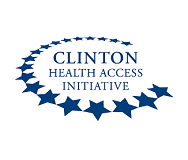Reflections on the Qualitative Research Network (QRN)
By Miriam Mutseta, PSI Zimbabwe Program Manager
February 2017
Following the successful launch of my blog in Zambia, Lusaka, here I am again with reflections on the QRN, Liverpool Chapter! Our eyes are already set on STAR phase 2 and how we can transition the QRN to the dizzy heights of the next level.
A long road travelled
During the February 2017 QRN meeting, I appreciated the long road we have travelled thus far and how much more we still need to do, with preliminary results bringing in more questions. The work on the visual stability of HIV Self-Test (HIVST) kits and client interpretation is ongoing and will expand to blood-based kits. Building upon the work conducted in Malawi and Zimbabwe, we want to do a stability test at one of the fixed sites but, having looked at the work done by Dr. Victoria Watson of the Liverpool School of Tropical Medicine (LSTM), I am thinking we could modify our protocol to look at more field-based conditions on community distribution instead of mimicking the same conditions explored at the LSTM laboratories or we could do both. With key challenges in late reads and a low return rate of 34% of kits in Zambia, this work could be vital in ensuring clients can accurately interpret their results. Urgent communication messages must be incorporated into the training sessions and provided to the public in general – a “lightbulb” moment for Varaidzo Mabhunu, PSI Zimbabwe’s Marketing Manager, and all marketers, and food for thought for Quality Assurance.

Dr. Victoria Watson’s work on the visual stability study and implications for HIVST quality control
Sharing ideas to improve linkage rates
We discussed low linkage rates in general and among the youth. Are we making efforts at packaging our linkages services so that clients naturally gravitate towards them or are we using a stick to push them to facilities? Uptake among the youths in Malawi is very high and I am wondering if in Zambia and Zimbabwe we might be failing them by not providing them with an attractive enough linkage package. Any Discrete Choice Experiments (DCEs) out there on linkages? More thoughts are needed regarding the barriers to integration of self-testing into the health care systems and beyond.
New to NVivo
We took some time in the meeting to work on the coding framework and perfected our skills on the use of NVivo. The coding framework is a work in progress and will need to be finalised. Our discussions now gravitate towards blood-based self-testing and into issues affecting self-testing that may be different from traditional methods of testing.
New starters
Of course, the QRN group has grown bigger and more inclusive. We welcomed to the network Richard Chilongosi, PSI Malawi’s HIVST Program Manager, and PSI Zimbabwe’s Marketing Manager, Varaidzo Mabhunu. We introduced the new arrivals to our business as usual way of doing things – a short train ride to LSTM’s Dr. Miriam Taegtmeyer’s place for the best curry I have ever had and a moonlight walk to the mighty River Mersey. The following evening it was the “Shiverpool” night tour – a ghost tour of Liverpool.

The ‘Shiverpool Experience’
The shaping of our curriculum was deeply rooted in the outputs of the QRN discussions and feedback. The coordination and free flow of ideas between researchers, implementers and marketers ignited the start of a regional communications campaign, based on the findings of both research and implementation.
Collaboration between STAR research arms
STAR researchers from other disciplines joined us and gave insights into their work – LSHTM’s Melissa Neuman (a Research Fellow and Lecturer in Epidemiology), Marc D’Elbée (a Research Fellow and Lecturer in Health Economics) and Cath Beaumont (STAR Project Manager) all made it to our meeting. Such was the high level of inspiration that there were whispers in the corridors to change the name of the network from QRN TO QIRN J, as we move to scale.
The value of the QRN to both researchers and implementers as we move to STAR phase 2 is immense, providing sustainability of the HIV self-testing initiative in the future. Phase 2 comes with more challenges as we move to blood-based testing, and the dreaded “prick”, more public sector involvement, more countries and more models. Moving from research to full-scale implementation. Issues of regulatory frameworks as governments warm up to integrating self-testing all need careful analysis.












